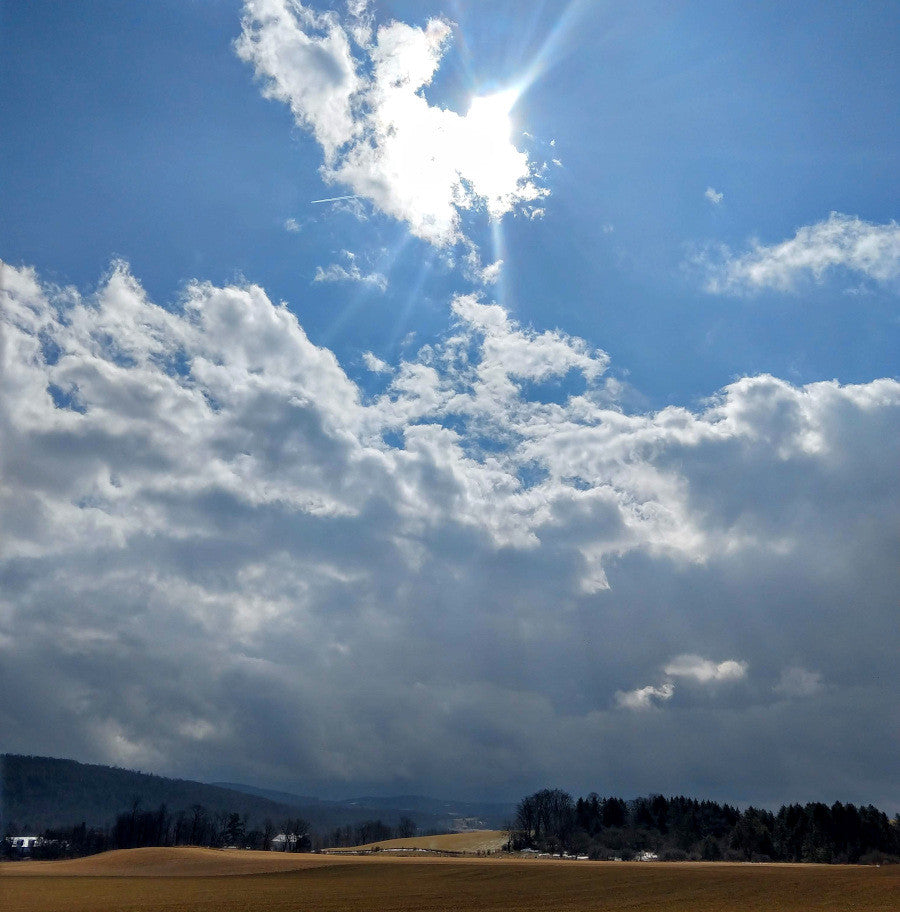By Garth Brown
As I write this rain falls heavy on the pasture and runs down the windows, giving the yellow grass and the distant line of trees a vague blurriness. It is always a hard time of year in central New York. Winter lets go slowly, with warmth trading for cold and rain trading for sun from one day to the next. The fields are muddy, and though the maples by the old farm house show red buds heavy on their branches, they wisely hold their leaves back against the freezing nights to come.
But in the last few days I have found a certain peace in this landscape, with its lingering snow melting to fill the stream that crosses the barnyard. It is not, as you might be thinking, that I see a hopeful prefiguring of spring in all the drab dormancy. Rather, it is the starkness itself that comforts.
An incipient pandemic promotes anxiety, for good reason. It is so immediate, and requires such changes in the patterns of our lives, that it can’t help but occupy much of our thought. And this is why I return to what David Abram calls “the more-than-human world.”
Looking across the barren form the world outside takes at this particular moment I am awed by the scale. In the time I’ve been sitting here the rain has slowed, the windows cleared, and so I can see - I can see the clouds flowing smoky purple over the hills that gently arch against them to the south, I can see my neighbor Don’s barn (I still think of it this way, though he passed seven years ago) standing tall and straight, with its sides darkened by the passing storm. I can see the fields between, first yellow and then yellow-green where there’s alfalfa, and in the lawn outside I can see small clover plants with improbably vibrant triple leaves. Finally, in a vase in the middle of the kitchen table, I can see pussywillow catkins, soft as the clouds and just the same color.
All of this persists apart from my own worries for the future, however valid those may be. This persistence, or even indifference, does not give me hope in any conventional sense, though I do have faith that the current crisis will pass in time. Instead I return to the word peace. There is an abiding peace in the continuous unfolding of the forces that support all life on this world, however often we might forget it. It is an austere sort of peace, but also a powerful one. Our own thoughts and fears, as paramount as they seem to each of us, are only the smallest part of something wildly immense.
I don’t know exactly how this might apply to those who don’t happen to live in a rural area, though I have a few humble suggestions. The same wisdom is in a backyard tree or the first triangular spear of green tulip starting to push from the earth, and even in a lawn if you look closely enough. For my part, I enjoy watching pigeons as much as any other living thing, and taking a moment to really feel cold wind through an open window, to truly smell the air and look up to the sky, can offer a glimpse of everything.

